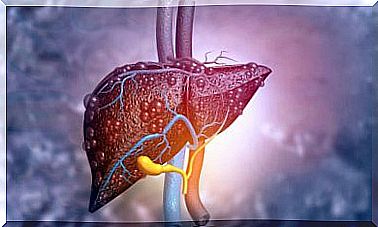What Is Traveler’s Diarrhea?
Traveler’s diarrhea can appear along with other symptoms, such as vomiting or fever. It is more common for it to appear when we travel to certain destinations with low infrastructure and hot weather.

Traveler’s diarrhea is that which appears when we travel to a place or country with hygiene and sanitation conditions different from our place of origin. It is due to an infection by a bacteria or virus present in the water or food we eat.
In recent years, tourism has been changing. Currently, many people choose as a destination countries that still do not have the adequate infrastructure, or exotic places where hygiene and sanitation conditions are not the best.
The truth is that, although the incidence of traveler’s diarrhea has been decreasing, it is estimated that it affects around 40% of travelers. It usually appears suddenly during the trip or right when you return, which can cause all plans to be affected.
Although traveler’s diarrhea is not usually serious and tends to go away on its own, it can present complications. Therefore, in this article we explain everything you need to know about this disorder and what are the main risk factors for contracting it.
What is traveler’s diarrhea?

Traveler’s diarrhea occurs when, while traveling to certain places, we are exposed to certain microorganisms to which we are not exposed in our place of origin. It can be viruses, bacteria, and even parasites.
Most often, we develop an infection by drinking water that has not been properly treated or disinfected. There are many places in the world where the quality of the water is not as desired. However, it can occur when eating food.
Most cases of traveler’s diarrhea are caused by the bacteria Escherichia coli. Specifically, there are certain strains of this bacterium, such as enterohemorrhagic E. coli , which stands out for being the cause of a large number of cases and more aggressive diarrhea.
Usually, diarrhea comes on suddenly. It can happen during your stay in that place and alter all the plans you had for the trip. Therefore, it is important to take certain precautions to avoid it. However, it may appear when you return.
In addition to diarrhea, these infections can cause other symptoms, such as nausea and vomiting. Even abdominal cramps and fever appear frequently. The problem is that, if not treated properly, it can lead to dehydration.
What risk factors are there for traveler’s diarrhea?
The first risk factor for getting traveler’s diarrhea is the destination. As we have mentioned, health conditions greatly influence; especially the disinfection quality of the water.
For this reason, the countries where the most cases occur are those of Central America, South America, Africa and Asia. In the same way, travel conditions influence, since if you go with few resources – backpacking style – it is easier for you to eat something contaminated or stay in unhealthy places.
The travel season is also important, as infections are more frequent in warmer months. We cannot forget that the conditions of each person are equally decisive. A person with a weakened immune system is more vulnerable to any infection.
How can it be prevented?

To prevent traveler’s diarrhea, you can follow some simple tips regarding food and drink. Ideally, you should eat foods that are well cooked, well cooked, and served hot. You should avoid products that have not been treated, such as unpasteurized dairy.
For example, try not to eat food from street stalls. In the case of water, you should always try to drink well-sealed bottled water. Try not to consume tap water, or to brush your teeth or rinse the fruit. Also, if you ask for water, make it in the form of hot drinks, such as tea.
The most important thing is that, if any of the symptoms that we have mentioned appear, you go to the nearest doctor and as soon as possible. Although diarrhea may go away on its own, it can also have serious consequences, such as dehydration.









